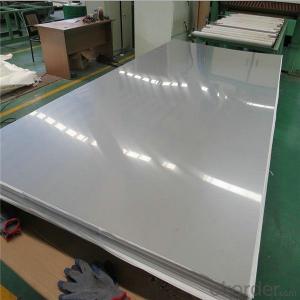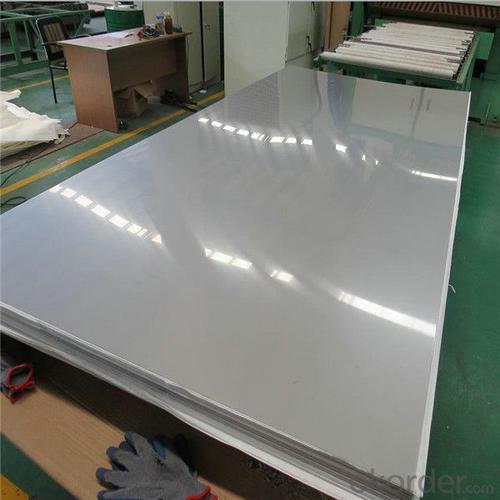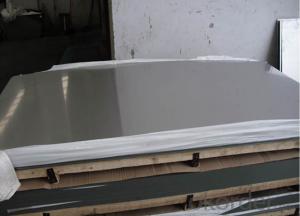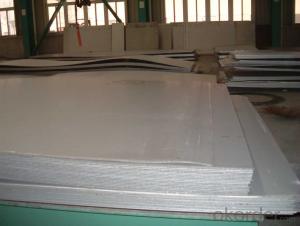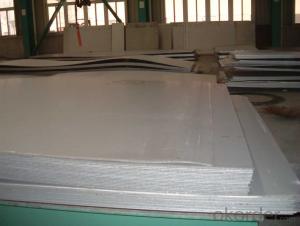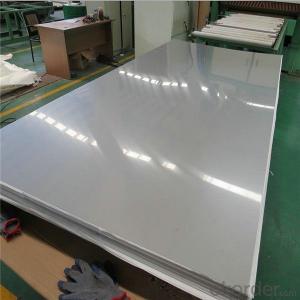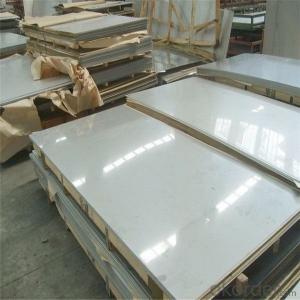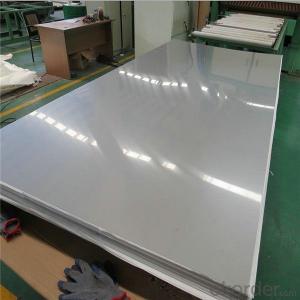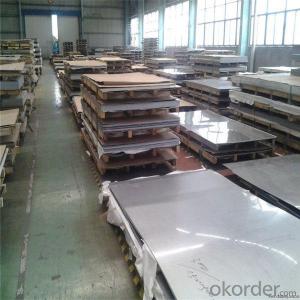0.3-3mm thickness 321 Stainless Steel Sheet
- Loading Port:
- Shanghai
- Payment Terms:
- TT OR LC
- Min Order Qty:
- 1 m.t.
- Supply Capability:
- 2000 m.t./month
OKorder Service Pledge
Quality Product, Order Online Tracking, Timely Delivery
OKorder Financial Service
Credit Rating, Credit Services, Credit Purchasing
You Might Also Like
Specification
Standard:
ASTM
Technique:
Cold Rolled
Shape:
Square
Surface Treatment:
Polished
Steel Grade:
300 Series
Certification:
SGS
Thickness:
1.2
Width:
1219
Length:
2000
Net Weight:
23
cold rolled 0.3-3mm thickness 321 stainless steel sheet
Product Description
1.Product Info
Item | cold rolled 0.3-3mm thickness 321 stainless steel sheet |
| Specification | Width:500mm---2000mm |
| Thickness:0.3mm---120mm(or as your requirement) | |
| Length:1000mm----6000mm | |
| Application | Petroleum,Chemical enginnering,Pharmaceutical ,Paper--making,Food,Nuclear power and other industries. |
| Package | Standard seaworthy package(wooden boxes package,and other package or as your requirement). |
| Delivery time | 7----10working days after the order received. |
| Delivery terms | FOB,CFR,CIF,CNF etc. |
| Brand name | TISCO,LISCO,ZPSS,BAOSTEEL. |
| Standard | JIS,AISI,ASTM,DIN,EN,GB. |
2.surface treatment
| Surface finish | Definition | Application |
| 2B | Those finished, after cold rolling, by heat treatment, pickling or other equivalent treatment and lastly by cold rolling to given appropriate luster. | Medical equipment, Food industry, Construction material, Kitchen utensils. |
| No.1 | The surface finished by heat treatment and pickling or processes corresponding there to after hot rolling. | The surface finished by heat treatment and pickling or processes corresponding there to after hot rolling. |
| NO.4 | Those finished by polishing with No.150 to No.180 abrasives specified in JIS R6001. | Kitchen utensils, Building construction, Medical equipment. |
| HL | Those finished polishing so as to give continuous polishing streaks by using abrasive of suitable grain size. | Building Construction. |
| BA | Those processed with bright heat treatment after cold rolling. | Kitchen utensils, Electric equipment, Building construction. |
3.product pictures show
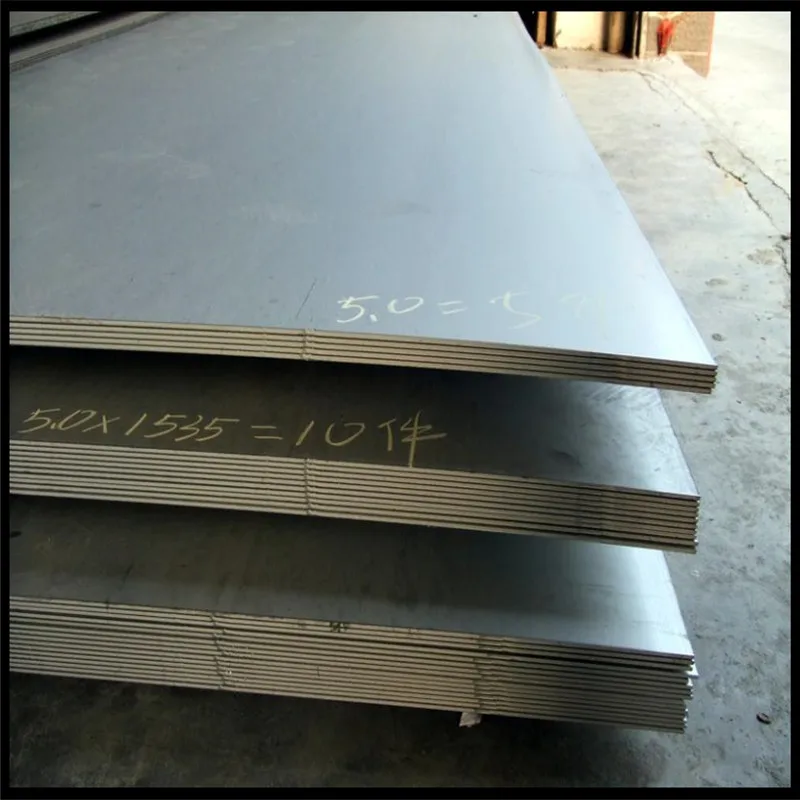
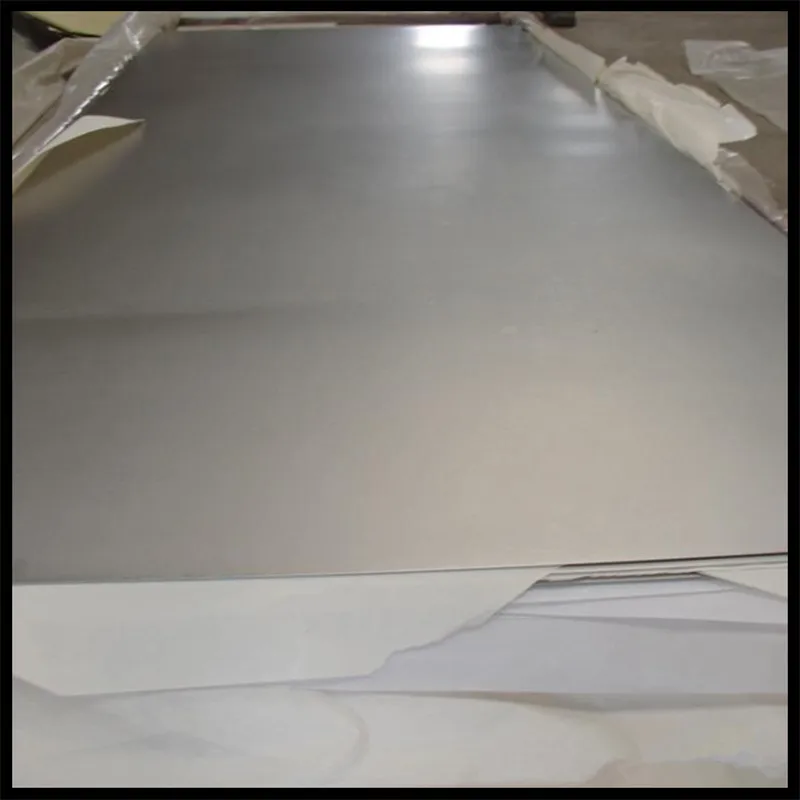
Packaging & Shipping
1.Package :Standard seaworthy package(wooden boxes package and other package or as your requirements).
2.Shipping:We will arrange the shipment within 7---10 working days after we get the order.
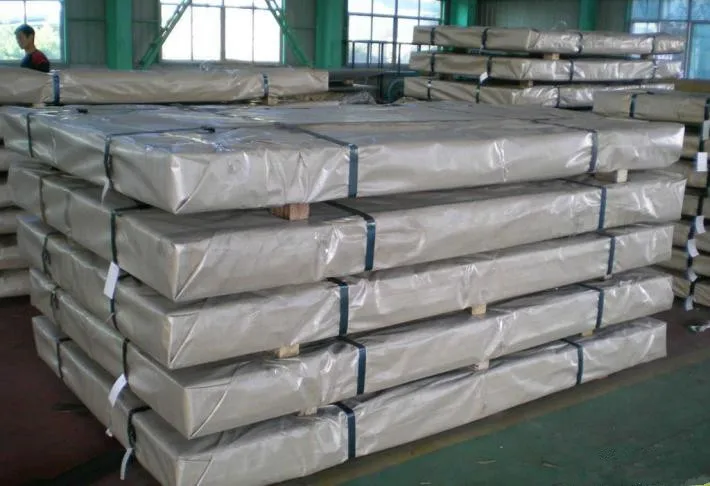
Detailed Images
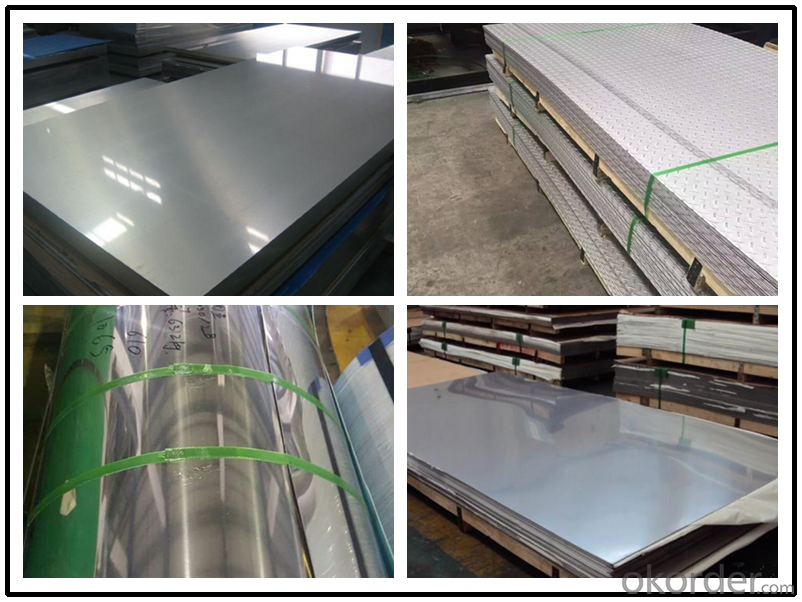
Packaging & Shipping
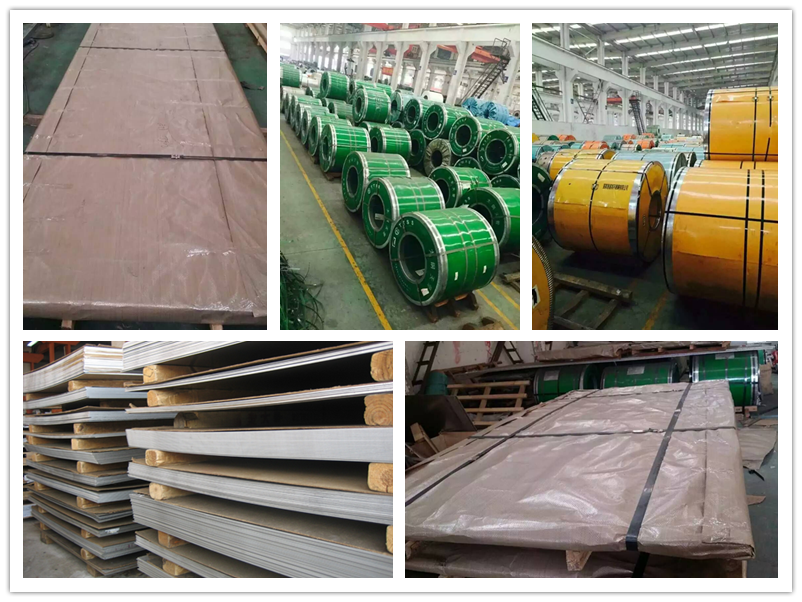
Application

- Q: Are stainless steel sheets suitable for food processing or medical applications?
- Yes, stainless steel sheets are highly suitable for food processing and medical applications. Stainless steel is a popular choice in these industries due to its numerous beneficial properties. Firstly, stainless steel is resistant to corrosion, making it ideal for environments where hygiene and cleanliness are of utmost importance, such as food processing plants and medical facilities. Secondly, stainless steel is a non-porous material, meaning it does not absorb or retain bacteria, germs, or odors. This makes it easy to clean and maintain high levels of sanitation, crucial in food processing and medical settings where contamination must be minimized. Additionally, stainless steel has excellent strength and durability, allowing it to withstand harsh conditions, heavy use, and frequent cleaning without deteriorating. This makes stainless steel sheets a reliable and long-lasting choice for these demanding applications. Furthermore, stainless steel is non-reactive with food and many medical substances, ensuring that it does not leach any harmful chemicals or contaminants into the products being processed or the patients being treated. This is crucial for maintaining the safety and integrity of both food and medical materials. In conclusion, stainless steel sheets are highly suitable for food processing and medical applications due to their corrosion resistance, non-porous nature, strength, durability, and non-reactive properties. Choosing stainless steel ensures the highest standards of hygiene, cleanliness, and safety in these industries.
- Q: Can stainless steel sheets be used for medical equipment?
- Yes, stainless steel sheets can be used for medical equipment. Stainless steel is widely used in the medical industry due to its excellent corrosion resistance, durability, and ease of cleaning. It is commonly used for surgical instruments, implants, medical devices, and equipment such as sterilization trays, hospital beds, and operating room tables. Stainless steel is non-reactive, which means it does not interact with body tissues or fluids, making it a safe and hygienic choice for medical applications. Additionally, stainless steel can withstand repeated sterilization processes without losing its properties, making it ideal for use in hospitals and healthcare facilities.
- Q: Can stainless steel sheets be used for food processing or medical applications?
- Stainless steel sheets can be utilized in both food processing and medical applications. This material is highly durable and resistant to corrosion, making it an ideal option for industries that prioritize hygiene and cleanliness. In the food processing sector, stainless steel sheets are commonly employed for various purposes, including countertops, work surfaces, sinks, storage containers, and equipment. Its non-porous surface inhibits the growth of bacteria and simplifies the process of cleaning and sanitizing. Likewise, stainless steel sheets are extensively used in medical applications due to their exceptional resistance to corrosion, heat, and chemicals. They are employed in medical instruments, surgical equipment, implants, and other medical devices that necessitate high levels of cleanliness and sterilization. Stainless steel's biocompatibility and resistance to body fluids also make it suitable for implantable devices such as pacemakers, joint replacements, and dental implants. In summary, stainless steel sheets are the preferred choice for food processing and medical applications owing to their hygienic properties, durability, and corrosion resistance.
- Q: Are stainless steel sheets suitable for electrical enclosures?
- Indeed, electrical enclosures can be made using stainless steel sheets. Stainless steel possesses remarkable attributes such as exceptional strength, resistance to corrosion, and durability, rendering it a perfect material for safeguarding electrical components. It affords a superior level of safeguarding against environmental factors like moisture, dust, and extreme temperatures. Furthermore, stainless steel boasts commendable electrical conductivity, which is indispensable for proper grounding and shielding. It also provides a good degree of electromagnetic compatibility (EMC), thereby diminishing the likelihood of electromagnetic interference (EMI) in delicate electrical equipment. Additionally, stainless steel can be effortlessly cleaned and maintained, guaranteeing a long-lasting and dependable enclosure for electrical applications.
- Q: Can stainless steel sheets be used for swimming pool construction?
- Yes, stainless steel sheets can be used for swimming pool construction. Stainless steel is a durable and corrosion-resistant material, making it suitable for withstanding the harsh conditions of a swimming pool environment. It is commonly used for constructing pool walls, floors, and other structural components.
- Q: How do you prevent galvanic corrosion when using stainless steel sheets?
- One effective method to prevent galvanic corrosion when using stainless steel sheets is to ensure they are not in direct contact with dissimilar metals. This can be achieved by using insulating materials or coatings, such as rubber gaskets or paint, between the stainless steel sheets and other metals. Additionally, regular maintenance and cleaning of the stainless steel surfaces can help prevent the accumulation of corrosive substances that could lead to galvanic corrosion.
- Q: How do you cut intricate designs in stainless steel sheets?
- Achieving intricate designs in stainless steel sheets can present a challenging task, but it can be accomplished through various methods. One commonly used technique involves the utilization of a laser cutting machine. Laser cutting provides precise and clean cuts, enabling the creation of intricate designs effortlessly. By melting or vaporizing the stainless steel with a laser beam, a smooth and precise cut is achieved. Another approach involves the usage of a CNC plasma cutter, which operates through a computer-controlled machine equipped with a plasma torch. This method ensures high precision and the capability to handle complex designs. However, additional finishing may be required for the edges to attain a polished and smooth appearance. Waterjet cutting is an alternative option for cutting intricate designs in stainless steel sheets. This method employs a high-pressure jet of water mixed with an abrasive substance to effectively cut through the metal. Waterjet cutting proves to be versatile, accommodating various thicknesses and designs, and delivering accurate and detailed outcomes. When it comes to smaller projects or fine designs, a jeweler's saw or a metal nibbler can be employed. These handheld tools enable manual cutting and offer greater control over the design. However, it is important to note that they may necessitate more time and effort in comparison to automated methods. Regardless of the chosen method, it is crucial to prioritize safety precautions by wearing protective gear and adhering to the manufacturer's instructions. Additionally, practicing on scrap pieces prior to working on the final stainless steel sheet can aid in refining the technique and achieving the desired results.
- Q: Can stainless steel plate spray paint?
- Whether spraying or brushing any kind of paint, it should be divided into 3-5 construction, one can not be painted too thick, the last dry and then painted next time. The easiest thing for beginners to do is to apply too much paint at once, resulting in "hanging" flaws that are neither beautiful nor strong.
- Q: Is stainless steel plate permitted to contact galvanized material?
- If your products are not immersed in the electrolyte (not put in wet or condensed water place), just hope galvanized plate itself does not corrode, consider using stainless steel screws, but doing so will occur between stainless steel bolts and steel carburizing, stainless steel bolt rust damage lost the meaning of stainless steel bolt. The reason why stainless steel is corroded at this time is called intergranular corrosion".
- Q: Are stainless steel sheets suitable for decorative purposes?
- Yes, stainless steel sheets are suitable for decorative purposes. They offer a sleek and modern aesthetic, are highly durable, and can be customized with various finishes and patterns. Additionally, stainless steel is resistant to corrosion, making it a practical choice for both indoor and outdoor decorative applications.
Send your message to us
0.3-3mm thickness 321 Stainless Steel Sheet
- Loading Port:
- Shanghai
- Payment Terms:
- TT OR LC
- Min Order Qty:
- 1 m.t.
- Supply Capability:
- 2000 m.t./month
OKorder Service Pledge
Quality Product, Order Online Tracking, Timely Delivery
OKorder Financial Service
Credit Rating, Credit Services, Credit Purchasing
Similar products
Hot products
Hot Searches
Related keywords
